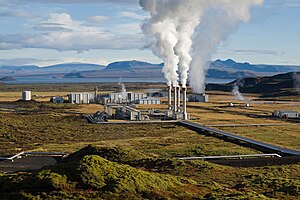A promising new innovation in geothermal technology, that offers a novel solution to climate change, has been created by two researchers from the University of Minnesota’s Department of Earth Sciences.
The technology focuses on tapping heat from beneath the Earth’s surface. By using high-pressure carbon dioxide (CO2) instead of water to extract the heat, the system has the potential to produce significantly more efficient renewable energy. At the same time, by sequestering CO2 deep underground, it actively reduces atmospheric CO2. It’s being hailed as a two in one solution for climate change.
The approach, coined the CO2-plume geothermal system (or CPG) was discovered by Earth sciences faculty member Martin Saar and graduate student Jimmy Randolph, in the University of Minnesota‘s College of Science and Engineering. They first struck the idea in 2008 whilst driving to northern Minnesota together to conduct unrelated field research on geothermal energy capture and geologic CO2 sequestration.
The core innovation at the heart of the CPG model lies in the use of high pressure CO2 instead of water. Established conventional approaches for transforming the Earth’s heat into electricity involve extracting hot water from rock formations several hundred feet below the Earth’s surface at key hot spots around the world. The CPG system takes this a step further by using high-pressure CO2 instead of water as the underground heat-carrying fluid. As CO2 travels more easily than water through porous rock, the heat can be extracted more readily, making it a more economically and technologically efficient system than traditional geothermal electricity production.
Related articles
- Commentary on Australia’s Future for Renewable Energy (habitatassociation.com.au)










